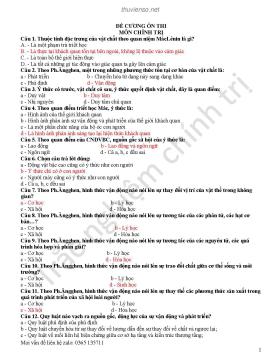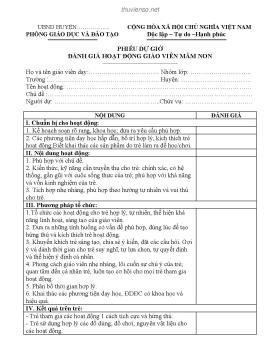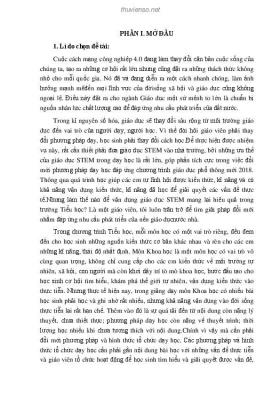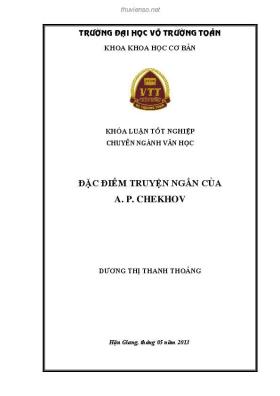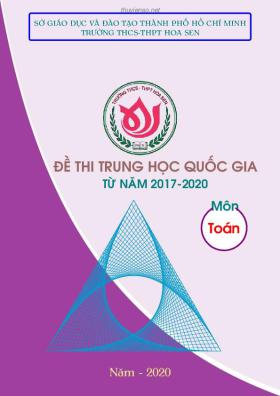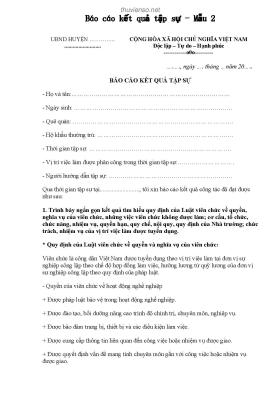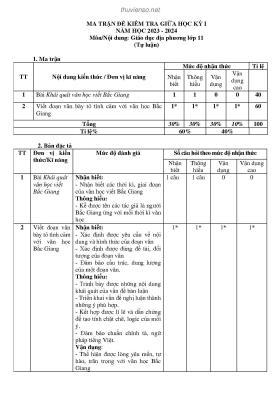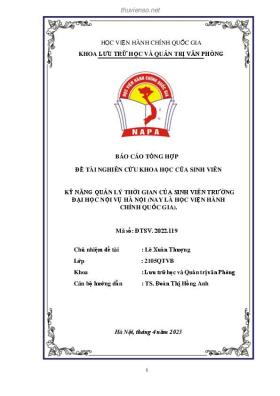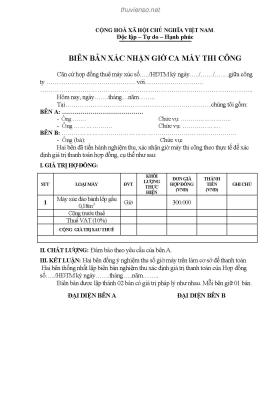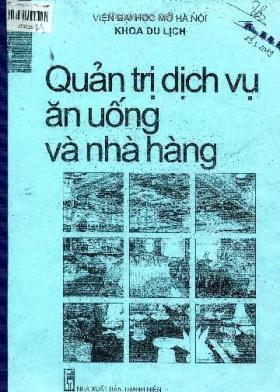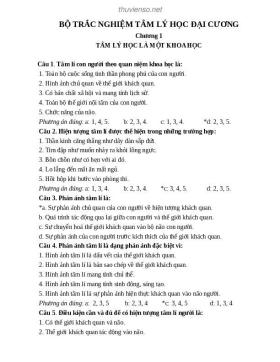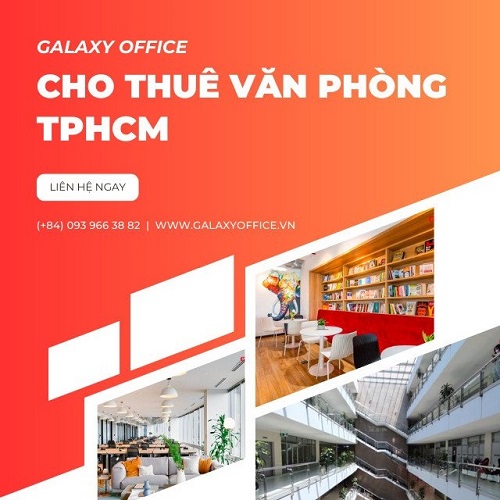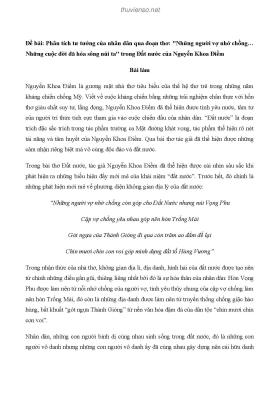
Experimental and modeling studies of Vietnam lemongrass essential oil extraction process using response surface methodology
Số trang: 6
Loại file: pdf
Dung lượng: 289.71 KB
Lượt xem: 13
Lượt tải: 0
Xem trước 2 trang đầu tiên của tài liệu này:
Thông tin tài liệu:
Natural precious products such as aroma compounds, essential oils, and bio-activated materials are usually extracted from about 30,000 botanical species. These extracts are often high competitive market due to their small content (less than 1 %) in plants and high purification cost. Thus, development of a modeling for the optimization of the crude oil extraction is highly paid attention. In this work, a modeling of Vietnam lemongrass oil extraction using steam distillation is developed and the optimization of the process parameters is performed using response surface methodology (RSM).
Nội dung trích xuất từ tài liệu:
Experimental and modeling studies of Vietnam lemongrass essential oil extraction process using response surface methodologyVietnam Journal of Science and Technology 56 (2A) (2018 ) 11-16 EXPERIMENTAL AND MODELING STUDIES OF VIETNAM LEMONGRASS ESSENTIAL OIL EXTRACTION PROCESS USING RESPONSE SURFACE METHODOLOGY Nguyen Trung Dung, Ta Hong Duc, Nguyen Dang Binh Thanh* Hanoi University of Science and Technology, No. 1, Dai Co Viet, Ha Noi * Email: thanh.nguyendangbinh@hust.edu.vn Received: 02 April 2018; Accepted for publication: 10 May 2018 ABSTRACT Natural precious products such as aroma compounds, essential oils, and bio-activatedmaterials are usually extracted from about 30,000 botanical species. These extracts are oftenhigh competitive market due to their small content (less than 1 %) in plants and high purificationcost. Thus, development of a modeling for the optimization of the crude oil extraction is highlypaid attention. In this work, a modeling of Vietnam lemongrass oil extraction using steamdistillation is developed and the optimization of the process parameters is performed usingresponse surface methodology (RSM). The operating parameters considered for the modelingand optimization are specific area of raw materials, moisture content of feedstock, and steamrate. Experimental data show that the oil yield from steam distillation of Vietnam lemongrass issignificantly affected by the three mentioned factors. Box-Behnken design (BBD) and analysisof variance (ANOVA) are used to examine the effects of operating parameters on the extractionefficiency. On the basis of the measurements and RSM, a quadric regression model as a functionof steam rate, specific area and moisture content of materials is estimated. The optimizedoperating conditions of the lemongrass hydrodistillation are also obtained by applying theproposed modeling.Keywords: lemongrass essential oil, steam distillation, modeling, optimization, response surfacemethodology (RSM). 1. INTRODUCTION Response surface methodology (RSM) has been largely used for optimizing the operatingconditions of a process. RSM consists of a group of mathematical and statistical techniques thatcan be used to evaluate the relationships between the response and the independent variables inwhich effects of individual or combination of variables can be examined. The main advantage ofRSM is the reduction of experimental runs to evaluate multiple parameters while capturing welltheir interactions. Therefore, RSM is a useful tool that can be applied to the development,improvement and optimization of operating conditions for a process [1]. Nguyen Trung Dung, Ta Hong Duc, Nguyen Dang Binh Thanh Lemongrass is one of the largely cultivated medicinal plants for its essential oil in parts oftropical and subtropical areas of Asia. However the low content of essential oil in plant material(less than 1 %) needed an extraction technique with optimal performance to achieve maximumyield, thus process parameters are often to be optimized [2, 3]. In the present study, RSM wascarried out to evaluate the optimized operating conditions for the maximum yield of essential oilfrom lemongrass (Cymbopogon Citratus) using steam distillation. The parameters considered forthe analysis were steam rate, specified area, and moisture content of initial materials. Thecomposition of essential oil of lemongrass was also analyzed. 2. MATERIALS AND METHODS2.1. Materials Fresh leaves and bulb of lemongrass (10 kg) used in the study was collected from QuangNam province. The plant material was dried at room temperature (25 oC). It was kept in a sealedplastic bag at ambient temperature after the drying step. The samples were then cut, grind atroom temperature prior to extraction.2.2. Experimental design and statistical analysis According to the Box-Behnken design, 17 experimental runs were prepared accounting forcombinations of independent variables including steam rate (3 kW, 4.5 kW, and 6 kW), materialsize (5 cm, 8.5 cm, and 12 cm), and moisture of material (15%, 37.5%, and 60%). The extractiontime of each experiment is 180 min under atmospheric pressure.The relationship between the response and the input is given by Eq. (1) [1, 4]: (1)where η is the response, is the unknown function of response, x1, x2, …, xn denote theindependent variables, also called natural variables, n is the number of the independent variablesand ε is the statistical error that represents other sources of variability not accounted for by . Because it is not possi ...
Nội dung trích xuất từ tài liệu:
Experimental and modeling studies of Vietnam lemongrass essential oil extraction process using response surface methodologyVietnam Journal of Science and Technology 56 (2A) (2018 ) 11-16 EXPERIMENTAL AND MODELING STUDIES OF VIETNAM LEMONGRASS ESSENTIAL OIL EXTRACTION PROCESS USING RESPONSE SURFACE METHODOLOGY Nguyen Trung Dung, Ta Hong Duc, Nguyen Dang Binh Thanh* Hanoi University of Science and Technology, No. 1, Dai Co Viet, Ha Noi * Email: thanh.nguyendangbinh@hust.edu.vn Received: 02 April 2018; Accepted for publication: 10 May 2018 ABSTRACT Natural precious products such as aroma compounds, essential oils, and bio-activatedmaterials are usually extracted from about 30,000 botanical species. These extracts are oftenhigh competitive market due to their small content (less than 1 %) in plants and high purificationcost. Thus, development of a modeling for the optimization of the crude oil extraction is highlypaid attention. In this work, a modeling of Vietnam lemongrass oil extraction using steamdistillation is developed and the optimization of the process parameters is performed usingresponse surface methodology (RSM). The operating parameters considered for the modelingand optimization are specific area of raw materials, moisture content of feedstock, and steamrate. Experimental data show that the oil yield from steam distillation of Vietnam lemongrass issignificantly affected by the three mentioned factors. Box-Behnken design (BBD) and analysisof variance (ANOVA) are used to examine the effects of operating parameters on the extractionefficiency. On the basis of the measurements and RSM, a quadric regression model as a functionof steam rate, specific area and moisture content of materials is estimated. The optimizedoperating conditions of the lemongrass hydrodistillation are also obtained by applying theproposed modeling.Keywords: lemongrass essential oil, steam distillation, modeling, optimization, response surfacemethodology (RSM). 1. INTRODUCTION Response surface methodology (RSM) has been largely used for optimizing the operatingconditions of a process. RSM consists of a group of mathematical and statistical techniques thatcan be used to evaluate the relationships between the response and the independent variables inwhich effects of individual or combination of variables can be examined. The main advantage ofRSM is the reduction of experimental runs to evaluate multiple parameters while capturing welltheir interactions. Therefore, RSM is a useful tool that can be applied to the development,improvement and optimization of operating conditions for a process [1]. Nguyen Trung Dung, Ta Hong Duc, Nguyen Dang Binh Thanh Lemongrass is one of the largely cultivated medicinal plants for its essential oil in parts oftropical and subtropical areas of Asia. However the low content of essential oil in plant material(less than 1 %) needed an extraction technique with optimal performance to achieve maximumyield, thus process parameters are often to be optimized [2, 3]. In the present study, RSM wascarried out to evaluate the optimized operating conditions for the maximum yield of essential oilfrom lemongrass (Cymbopogon Citratus) using steam distillation. The parameters considered forthe analysis were steam rate, specified area, and moisture content of initial materials. Thecomposition of essential oil of lemongrass was also analyzed. 2. MATERIALS AND METHODS2.1. Materials Fresh leaves and bulb of lemongrass (10 kg) used in the study was collected from QuangNam province. The plant material was dried at room temperature (25 oC). It was kept in a sealedplastic bag at ambient temperature after the drying step. The samples were then cut, grind atroom temperature prior to extraction.2.2. Experimental design and statistical analysis According to the Box-Behnken design, 17 experimental runs were prepared accounting forcombinations of independent variables including steam rate (3 kW, 4.5 kW, and 6 kW), materialsize (5 cm, 8.5 cm, and 12 cm), and moisture of material (15%, 37.5%, and 60%). The extractiontime of each experiment is 180 min under atmospheric pressure.The relationship between the response and the input is given by Eq. (1) [1, 4]: (1)where η is the response, is the unknown function of response, x1, x2, …, xn denote theindependent variables, also called natural variables, n is the number of the independent variablesand ε is the statistical error that represents other sources of variability not accounted for by . Because it is not possi ...
Tìm kiếm theo từ khóa liên quan:
Vietnam Journal of Science and Technology Bài viết khoa học Tạp chí Khoa học Công nghệ Việt Nam Lemongrass essential oil Steam distillation Response surface methodologyGợi ý tài liệu liên quan:
-
Việt Nam: Những khó khăn và kiến nghị cải thiện năng suất lao động trong bối cảnh hiện nay
3 trang 305 0 0 -
Giải pháp xây dựng TCVN và QCVN về xe điện hài hòa với tiêu chuẩn, quy chuẩn quốc tế
2 trang 132 0 0 -
Phong cách lãnh đạo của đội ngũ lãnh đạo chủ chốt tại các doanh nghiệp nhà nước trong bối cảnh mới
4 trang 70 0 0 -
3 trang 56 0 0
-
Định mức kinh tế - kỹ thuật đối với hoạt động thông tin khoa học và công nghệ
3 trang 37 0 0 -
Nhận diện một số nút thắt gây trì trệ trong đổi mới và phát triển khoa học và công nghệ
3 trang 32 1 0 -
Ứng dụng kỹ thuật hạt nhân giảm thiểu xói mòn đất
4 trang 31 0 0 -
Ninh Thuận: Nâng cao năng suất dựa trên nền tảng khoa học, công nghệ và đổi mới sáng tạo
3 trang 28 0 0 -
Modeling the UO2 ex-AUC pellet process
14 trang 27 0 0 -
Hợp tác trong lĩnh vực y tế giữa Việt Nam và Angola
6 trang 25 0 0



